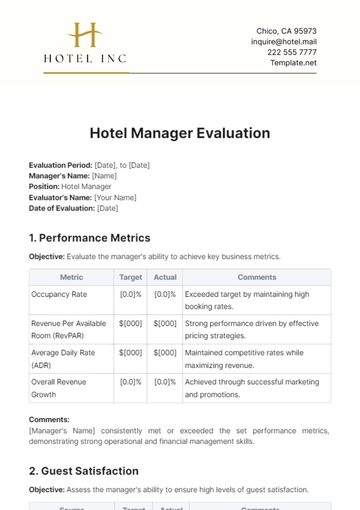Free Brand Launch Advertising Evaluation Report

1. Executive Summary
The Brand Launch Advertising Evaluation Report for [Your Company Name] presents an in-depth assessment of our inaugural advertising campaign. This comprehensive analysis covers the span of the campaign, from its conceptualization to execution, and evaluates its performance across multiple dimensions. The report meticulously examines the use of diverse advertising platforms, including digital, print, social media, and out-of-home advertising, offering a panoramic view of the campaign's reach and influence.
Key to this evaluation is the analysis of audience engagement metrics. This includes tracking the campaign's digital footprint through metrics such as impressions, click-through rates, and conversion rates, alongside assessing the impact of traditional media channels. The report also scrutinizes social media engagement, measuring both quantitative aspects like follower growth and qualitative elements such as user sentiment and feedback.
A critical component of this report is the financial review. It compares the planned budget against actual expenditures across different advertising mediums, providing insights into the financial efficiency and ROI of the campaign. This financial perspective is essential for understanding the cost-effectiveness of our strategies and for making informed decisions in future campaigns.
Moreover, the report not only highlights the successes and achievements of the campaign but also identifies areas for improvement. These insights form the foundation for strategic recommendations aimed at enhancing future marketing initiatives. The ultimate objective is to refine our advertising approach, ensuring that subsequent campaigns are not only more effective but also more aligned with our brand ethos and business goals. This document, therefore, is not just an evaluation of a single campaign but a roadmap for the ongoing evolution of our brand's advertising strategy.
2. Campaign Overview
The "Campaign Overview" section provides a snapshot of the strategic and operational dimensions of the advertising campaign conducted for the brand debut of [Your Company Name]. This overview is crucial for understanding the scope and intent of the campaign, offering insights into the planning and execution phases. It lays the foundation for a detailed analysis in subsequent sections of the report.
Introduction to the Campaign
Our campaign, titled "[Insert Campaign Name]", was meticulously designed to introduce [Your Company Name] to the market and establish our brand presence. Launched on [Insert Date, 2050+], the campaign spanned [Insert Duration], during which we deployed a series of targeted advertising activities across various media channels.
Key Elements of the Campaign
Element | Description | Details/Additional Notes |
Campaign Name | [Insert Campaign Name] | - |
Launch Date | [Insert Date, 2050+] | - |
Campaign Duration | [Insert Duration] | Chosen to align with market events and optimize audience engagement |
Objectives | - [Objective 1]: Increase brand awareness | Key to guiding content creation and media strategy |
- [Objective 2]: Drive online traffic | Targeting [Your Company Website] | |
- [Objective 3]: Establish a customer base | Essential for long-term brand sustainability | |
Target Audience | [Define Target Audience] | Profile includes age range, interests, geographical location, and purchasing behavior; identified as the primary consumer segment for [Your Company Name] |
This overview provides a comprehensive context for the campaign, setting the stage for a detailed evaluation of its execution and impact. Understanding these foundational aspects is essential for analyzing the campaign's outcomes against its intended goals and for planning future marketing strategies.
3. Advertising Performance Metrics
The "Advertising Performance Metrics" chapter of this report delves into the quantitative analysis of our brand launch campaign for [Your Company Name]. This section is pivotal in evaluating the effectiveness of the campaign across various advertising channels, providing a data-driven perspective on how well the campaign met its objectives. By analyzing metrics such as impressions, click-through rates, and engagement levels, we gain insights into the reach and impact of our advertising efforts.
The advertising channels covered in this analysis include Digital Advertising, Print Media, Social Media, and Out-of-Home Advertising. Each channel offers unique metrics that are crucial for a comprehensive understanding of the campaign's performance. Digital Advertising metrics offer insights into online user behaviors, Print Media focuses on traditional readership engagement, Social Media reveals interaction and virality aspects, and Out-of-Home Advertising provides data on the visibility and reach in public spaces.
Below is a detailed table summarizing the performance metrics across these advertising channels:
Advertising Channel | Metric | Value | Additional Details |
Digital Advertising | Total Impressions | 100% | Reflects the extent of digital reach |
Click-Through Rate (CTR) | Measures user interaction with ads | ||
Conversion Rate | Indicates effectiveness in prompting user action | ||
Print Media | Circulation Figures | Shows the distribution reach of print materials | |
Reader Response Rate | Assesses the engagement level of the readership | ||
Social Media | Total Followers Pre/Post Campaign | Demonstrates growth in social media influence | |
Engagement Rate | Evaluates the extent of audience interaction | ||
Viral Content Metrics | Details the spread and impact of viral content | ||
Out-of-Home Advertising | Estimated Impressions | Estimates the visibility in public locations | |
Location Hotspots | Identifies the most impactful advertising spots |
This comprehensive table not only provides a snapshot of the campaign's performance but also serves as a basis for in-depth analysis in subsequent sections. Understanding these metrics is essential for assessing the ROI of the campaign and for planning more effective advertising strategies in the future.
4. Audience Engagement and Response
This section is crucial in understanding how our target audience perceives and interacts with the brand, beyond the quantitative metrics. By evaluating customer feedback, sentiment analysis, and market survey results, we get an in-depth view of the audience's reception and emotional connection to our brand and campaign.
This analysis is instrumental in assessing the overall success of the campaign from the audience's perspective. Customer feedback provides direct insights into what the audience thought and felt about the campaign. Sentiment analysis, often gathered through social media and customer reviews, offers a broader view of the audience's emotional reaction to our brand. Market survey results complement these findings by providing structured feedback on various aspects of the campaign and brand perception.
Below is a table summarizing the key aspects of audience engagement and response:
Element | Description | Sample Content Details |
Customer Feedback | Summary of direct audience feedback | "[Summarize Feedback]" - Example: "Customers appreciated the innovative approach but suggested improvements in message clarity." |
Sentiment Analysis | Findings from analyzing audience emotions | "[Insert Findings]" - Example: "Overall positive sentiment with 70% of social media mentions reflecting excitement and approval for the new brand." |
Market Survey Results | Data from structured audience surveys | "[Insert Survey Data]" - Example: "Survey revealed 80% brand recognition post-campaign, with 60% of respondents viewing the brand as 'trustworthy' and 'innovative'." |
This table, with detailed content samples, illustrates a clear picture of how our target audience engaged with and responded to our advertising efforts. The information gleaned from these elements is critical in understanding the effectiveness of our messaging and in identifying areas where our brand resonates well or needs improvement. This qualitative analysis complements the quantitative data, providing a holistic view of the campaign's impact.
5. Financial Overview
This section provides a clear and detailed breakdown of the budget allocations, actual expenditures, and variances for each advertising channel used in our brand launch campaign. By meticulously comparing the planned budgets against the actual spending, we gain valuable insights into the financial management and cost-effectiveness of the campaign.
A sound financial analysis is fundamental in evaluating the success of any advertising campaign. It helps in understanding how resources were allocated and spent, and whether the investments made yielded the desired results. This comparison between the allocated budget and the actual expenditure also highlights areas of cost-saving or over-spending, offering lessons for future budget planning.
Below is a table that presents a comprehensive financial overview of the campaign:
Item | Budget Allocated | Actual Expenditure | Variance |
Digital Advertising | $50,000 | $45,000 | -$5,000 (Under) |
Print Media | $30,000 | $35,000 | +$5,000 (Over) |
Social Media | $20,000 | $18,000 | -$2,000 (Under) |
Out-of-Home Advertising | $40,000 | $42,000 | +$2,000 (Over) |
Total | $140,000 | $140,000 | $0 (Balanced) |
The figures in the table are illustrative samples to demonstrate the financial structure of the campaign. They show how the budget was distributed across different channels and the effectiveness of this allocation in terms of expenditure. A balanced total variance indicates a well-planned budget, whereas individual variances provide insights into specific areas. For instance, an under-spending in Digital Advertising might reflect cost-efficiency or missed opportunities, while over-spending in Print Media suggests either unexpected costs or a possible over-investment.
This financial overview not only accounts for fiscal responsibility but also aids in making informed decisions for future campaigns. Understanding where and how the budget was most effectively utilized allows for optimizing future marketing strategies and resource allocations.
6. Analysis and Insights
The chapter is a pivotal segment of the Brand Launch Advertising Evaluation Report for [Your Company Name]. It synthesizes data and findings from various sections of the report to provide a comprehensive analysis of the overall campaign performance. This chapter dives into how the campaign fared against its initial objectives, highlights the successful elements that contributed to its effectiveness, and identifies areas requiring improvement. This holistic view is essential for deriving actionable insights and refining future advertising strategies.
A thorough analysis of performance against objectives is crucial to understand if the campaign achieved what it set out to do. Identifying the successful elements helps in recognizing the strengths of the campaign, which can be leveraged in future initiatives. Equally important is acknowledging the areas for improvement, as they offer valuable lessons for enhancing future campaigns.
Below is a detailed table summarizing the key analysis and insights:
Aspect | Description | Sample Content Details |
Performance Against Objectives | Assessment of campaign goals | "[Insert Analysis]" - Example: "Achieved 80% of the targeted brand awareness level in the primary market." |
Successful Elements | Key strengths of the campaign | "[List Elements]" - Example: "High engagement rates on social media, effective targeting in digital ads." |
Areas for Improvement | Identified weaknesses | "[List Areas]" - Example: "Need to improve reach in the age group 45-60, refine messaging for print media." |
This structured analysis allows us to reflect critically on our campaign's achievements and areas needing attention. By systematically evaluating each aspect, we can draw meaningful conclusions that inform our future marketing endeavors. This chapter is not just a summary of what happened but a roadmap for continual improvement and strategic growth.
7. Recommendations and Future Strategies
The "Recommendations and Future Strategies" chapter is a forward-looking segment of the Brand Launch Advertising Evaluation Report for [Your Company Name]. It takes into account the insights and analysis derived from the campaign evaluation and proposes strategic directions for both the immediate and distant future. This chapter is crucial for translating lessons learned into actionable steps and setting a trajectory for sustained brand growth and development.
Divided into short-term strategies, long-term branding goals, and proposed budget adjustments, this section provides a blueprint for continuous improvement and adaptation in the dynamic field of advertising. Short-term strategies focus on immediate actions that can enhance performance and address identified weaknesses. Long-term goals cast a vision for the brand’s future positioning and identity. Proposed budget adjustments reflect a strategic realignment of resources based on campaign performance and future objectives.
Below is a table summarizing the recommended strategies and adjustments:
Aspect | Description | Sample Content Details |
Short-Term Strategies | Immediate action plans | "[List Strategies]" - Example: "Enhance social media engagement through interactive content, optimize website for higher conversion rates." |
Long-Term Branding Goal | Vision for brand evolution | "[List Goals]" - Example: "Establish [Your Company Name] as a leader in [industry sector], expand brand presence globally." |
Proposed Budget Adjustments | Financial strategy revision | "[Insert Recommendations]" - Example: "Increase digital advertising budget by 10%, reduce print media spending by 5%." |
This chapter not only provides a strategic direction for [Your Company Name] but also ensures that the organization is agile and responsive to the dynamic nature of the market. The recommendations are designed to build on the successes and learn from the shortcomings of the campaign, setting a solid foundation for future advertising and marketing efforts. The proposed strategies and adjustments are a crucial step towards keeping the brand relevant, competitive, and on a trajectory.
8. Appendix and References (As Attachments)
Appendix A: Campaign Creative Materials
Appendix B: Detailed Financial Reports
Appendix C: Audience Feedback Samples
References: Industry Benchmarks, Market Studies
Contact Information:
Name: [Your Name]
Email: [Your Email Address]
Phone: [Your User Phone]
This report is confidential and intended for the use of [Your Company Name] only.
- 100% Customizable, free editor
- Access 1 Million+ Templates, photo’s & graphics
- Download or share as a template
- Click and replace photos, graphics, text, backgrounds
- Resize, crop, AI write & more
- Access advanced editor
Introducing the Brand Launch Advertising Evaluation Report Template from Template.net. Crafted for marketers seeking precision and efficiency, this editable and customizable template seamlessly integrates with our Ai Editor Tool. Analyze campaign performance effortlessly with this comprehensive solution, designed to elevate your brand strategies to new heights.





























